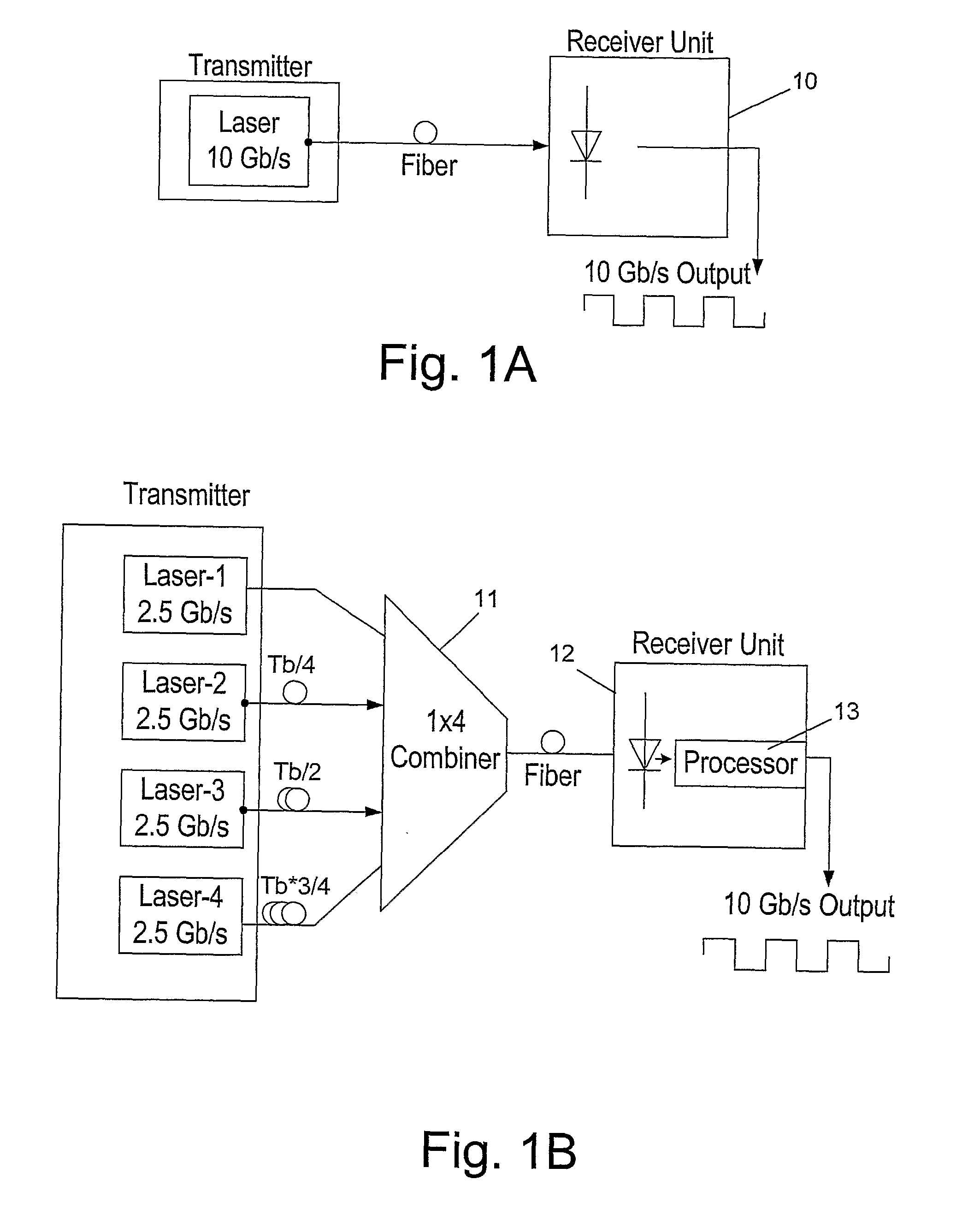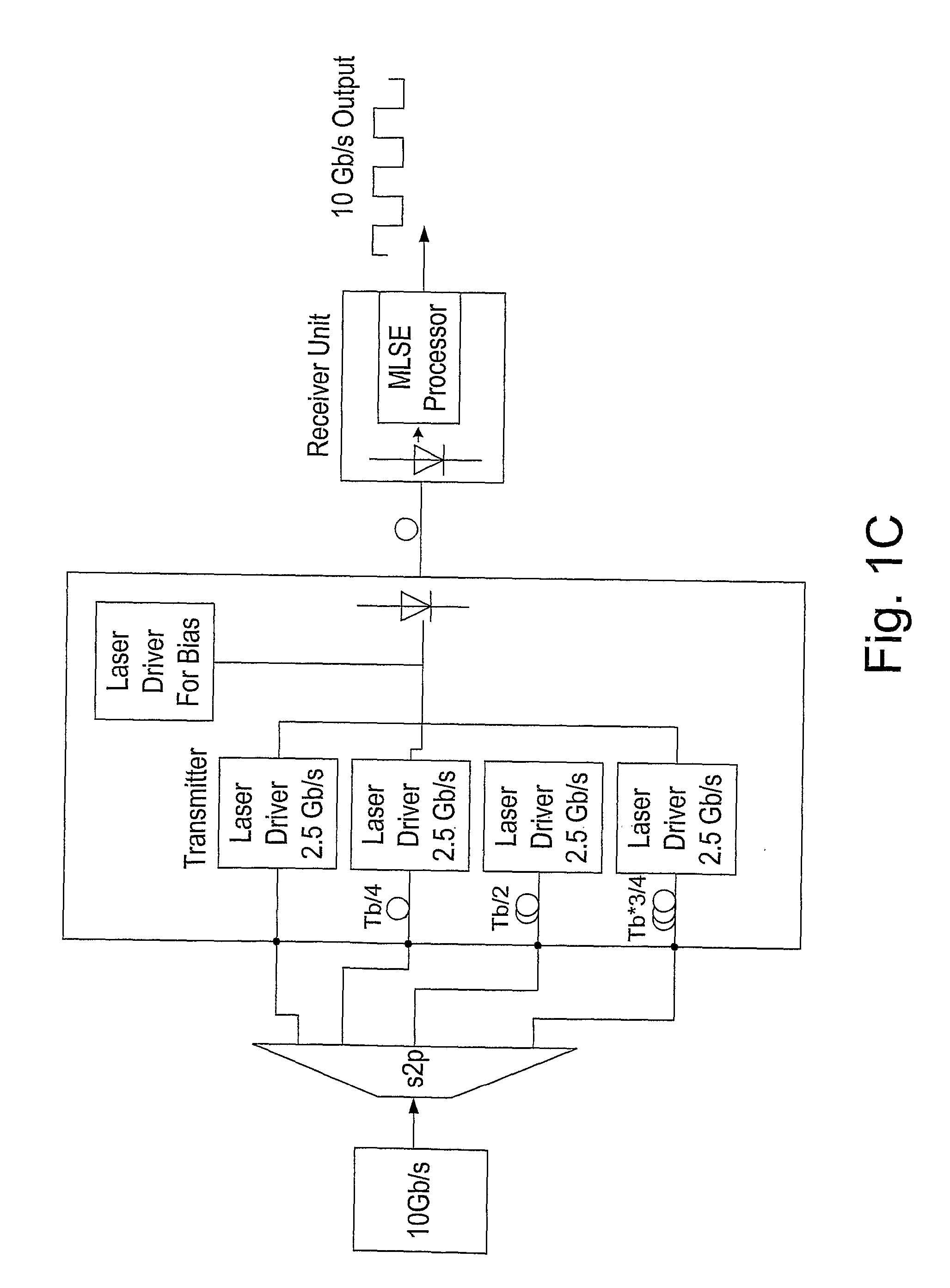Method and Apparatus for Increasing the Capacity of A Data Communication Channel
apacity technology, applied in the field of data communication, can solve the problems of bit smear at the receiver end, deterioration of the quality of modulated optical signals, and overloaded optical infrastructure, and achieve the effect of efficient increasing the capacity of a data communication channel
- Summary
- Abstract
- Description
- Claims
- Application Information
AI Technical Summary
Benefits of technology
Problems solved by technology
Method used
Image
Examples
Embodiment Construction
[0041]The present invention proposes a method that combines properties of time division multiplexing with multilevel multiplexing of signals, in order to efficiently increase the channel capacity. This unique combination is called hereinbelow Time Division Multilevel Multiplexing (TDMM) and allows increasing the bandwidth of data that can be transmitted through the channel by a factor of N (N represents the number of levels of the multilevel signal) or alternatively, allows the transmission of N independent channels through the fiber, or any combination thereof. The proposed method increases the bandwidth cost effectiveness and reduces the impact of fiber chromatic dispersion.
[0042]The system and method proposed by the present invention allow using low-cost low-frequency lasers with indirect modulation for high-speed fiber-optic transmission, rather than using a high-frequency laser that requires expensive direct modulation. In addition, the proposed method effectively mitigates the...
PUM
 Login to View More
Login to View More Abstract
Description
Claims
Application Information
 Login to View More
Login to View More - R&D
- Intellectual Property
- Life Sciences
- Materials
- Tech Scout
- Unparalleled Data Quality
- Higher Quality Content
- 60% Fewer Hallucinations
Browse by: Latest US Patents, China's latest patents, Technical Efficacy Thesaurus, Application Domain, Technology Topic, Popular Technical Reports.
© 2025 PatSnap. All rights reserved.Legal|Privacy policy|Modern Slavery Act Transparency Statement|Sitemap|About US| Contact US: help@patsnap.com



